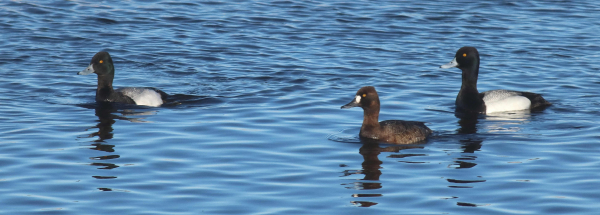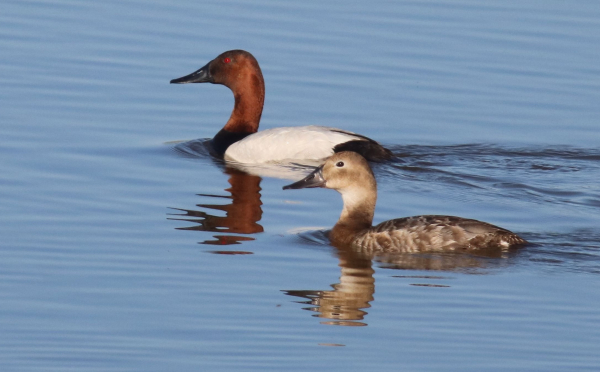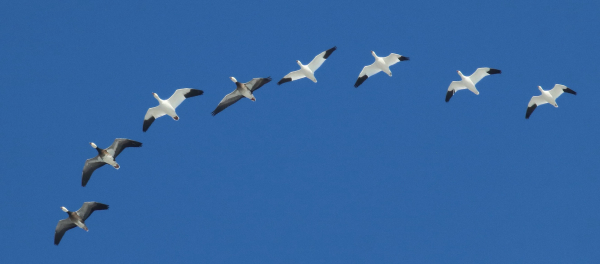
As spring migration provides exciting looks at birds just traveling through, some species may only be present for a couple days. The rarest migrants may only stop in the area every couple years. For birders with cameras, this makes bird photography even more interesting and exciting! Sometimes you get one spring opportunity with a species – or one missed opportunity. But some springs are special, and they provide surprises with payback for a few days, or a week or more.
Depending on the day, the entire area can be filled with a variety of photo opportunities, or you may find yourself focusing on one species at one location. However it plays out, spring migration photography is exciting; things happen quickly, and photo opportunities are ever-changing. One moment I may be concentrating on photographing a group of Lesser Scaup drakes displaying to a female on the edge of lake ice, then following their display flight; only to be distracted by the sudden appearance of a regal pair of Canvasbacks; just before a flight of Snow and Ross’s Geese passes overhead, flock after flock after flock commands my attention – all while parked on the edge of a prairie marsh Saturday evening.
During early spring, I find that the photo techniques I use most tend to fall into three categories: 1) Covering a lot of landscape to get a feel for what birds are in the area and what locations pose the best options, while taking advantage of the best photo opportunities along the way. 2) Finding a hotspot and staying in the best location to take advantage of the action and the sunlight. 3) Hiking along an established trail through attractive habitat that promises interesting birds and photo opportunities.
I get the most action by being mobile and using my vehicle as a blind along the way. I am always super careful when I’m on any road and always pull off the road so passing cars can pass by unimpeded and without gathering too much attention. (Usually, the only concern is when a driver stops to make sure I’m not having vehicle trouble, or when a friend happens by during their farm or ranch activities.) I almost never get out of my vehicle when I’m pulled over; that’s when wildlife becomes extra on-guard or flushes or ducks away. Use your vehicle as a mobile blind whenever you can; and if you need to or want to reposition a few yards to get a better view or improve your angle, that’s pretty easy in a vehicle.

While photographing from your vehicle, you can make the most of some of its simple features, primarily to rest or brace your camera and telephoto lens on the window or window frame. Your vehicle can provide some shade, and you can turn on the heater or air conditioning in a pinch; then turn the vehicle off when a photo op presents itself. (While I touch on it, always turn your vehicle off when you’re photographing to avoid the shake created by the running engine.)
Being mobile allows you to check out a hotspot, park if it shows promise, or keep moving if not. Sometimes a location is hot for a short time, other times it can be good for days, but the thing about spring is that it is ever-changing, and there are no two springs that are alike.
When I decide to photograph on foot, I put exercise on a level second to photography. I try to stop periodically to listen and permit birds to resume activities my advances may have disturbed. When an interesting bird appears, allow it to show you what it’s doing and get used to your form nearby before beginning a stalk to get into a better position for photos. Maybe the bird will even move closer to you without a stalk.

When walking, watch your steps; try not to step on twigs and dry leaves; move slowly and deliberately, and watch for any movement in the trees, bushes, sky, and ground. Your ears will also serve you well as you listen for movements and identify birds calling in the area. Most of all, be aware of where your light is coming from. Keep the sun behind you and your shadow in front of you to try to ensure the best lighting under given conditions. Be on the alert, be resilient, and take lots of photos to review and edit, because you know your best photos will be sorted out during your photo editing process – enjoy that process too.
Article and photographs by Paul Konrad
Share your bird photographs and birding experiences at editorstbw2@gmail.com